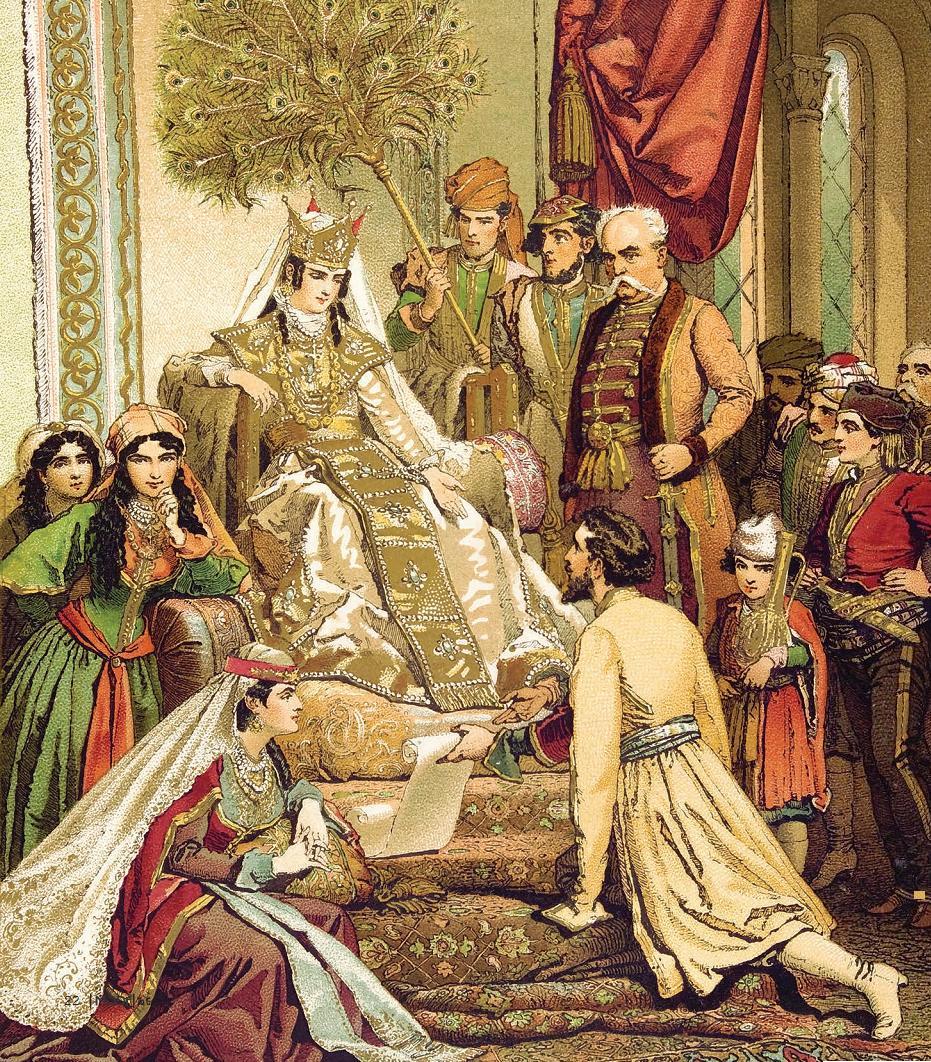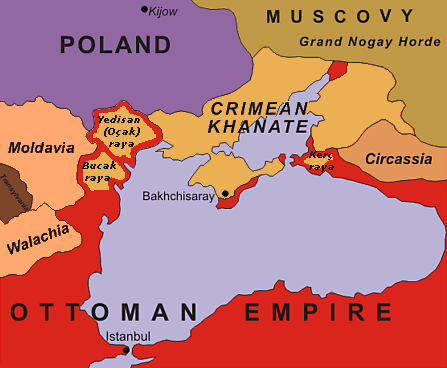|
Agrippina Japaridze
Agrippina, Countess von Zarnekau (nГ©e Agrippina Constantines asuli Japaridze; ka, бғҗбғ’бғ бғҗбғӨбғҳбғңбғҗ бғҜбғҗбғӨбғҗбғ бғҳбғ«бғ”, бғ’бғ бғҗбғӨбғҳбғңбғҳбғҗ бғӨбғқбғң бғ–бғҗбғ бғңбғ”бғҷбғҗбғЈ) (October 25 November o.s., 1855 - October 18, 1926) Almanac de Gotha, Volume 144, 1907, p. 64 was a Georgian aristocrat, socialite and patron of numerous educational establishments in Russian Imperial Georgia. She was known for her scandalous divorce and her even more controversial role in the secret marriage of Grand Duke George Alexandrovich of Russia, which caused a rupture in the Russian Imperial Family. Her name is associated with architectural gems that still stand in Tbilisi and western Georgia, some of which continue to be subject of rumors surrounding the countess' eventful life and her tragic, solitary demise. Family and early years Agrippina was born Agrippina Constantines asuli Japaridze in the upper Racha region of Georgia, then part of Imperial Russia to Constantine an ... [...More Info...] [...Related Items...] OR: [Wikipedia] [Google] [Baidu] |
Dadiani
The House of Dadiani ( ka, бғ“бғҗбғ“бғҳбғҗбғңбғҳ ), later known as the House of Dadiani- Chikovani, was a Georgian family of nobles, dukes and princes, and a ruling dynasty of the western Georgian province of Mingrelia. The House of Dadiani The first data about the family dates back to 1046 AD. Presumably, the Dadiani descended from a certain Dadi, of the House of Vardanisdze. Appointed as hereditary ''eristavi'' (dukes) of Odishi ( Samegrelo) in reward for their military services, the family had become the most powerful feudal house in western Georgia by the 1280's. At that time, the branches of the family governed also Svaneti, Guria, and Bedia. In 1542 AD, Duke Levan I Dadiani became hereditary Prince (''mtavari'') of Mingrelia and established himself as an independent ruler. His descendant Prince Levan III Dadiani was forced to abdicate in 1691 AD and DadianiвҖҷs relatives from the House of Chikovani, hitherto Princes of Salipartiano, inherited the title of Princes of ... [...More Info...] [...Related Items...] OR: [Wikipedia] [Google] [Baidu] |
Tbilisi
Tbilisi ( ; ka, бғ—бғ‘бғҳбғҡбғҳбғЎбғҳ ), in some languages still known by its pre-1936 name Tiflis ( ), is the capital and the largest city of Georgia, lying on the banks of the Kura River with a population of approximately 1.5 million people. Tbilisi was founded in the 5th century AD by Vakhtang I of Iberia, and since then has served as the capital of various Georgian kingdoms and republics. Between 1801 and 1917, then part of the Russian Empire, Tiflis was the seat of the Caucasus Viceroyalty, governing both the northern and the southern parts of the Caucasus. Because of its location on the crossroads between Europe and Asia, and its proximity to the lucrative Silk Road, throughout history Tbilisi was a point of contention among various global powers. The city's location to this day ensures its position as an important transit route for energy and trade projects. Tbilisi's history is reflected in its architecture, which is a mix of medieval, neoclassical, Beaux Art ... [...More Info...] [...Related Items...] OR: [Wikipedia] [Google] [Baidu] |
The Knight In The Panther's Skin
''The Knight in the Panther's Skin'' ( ka, бғ•бғ”бғӨбғ®бғҳбғЎбғўбғ§бғҗбғқбғЎбғҗбғңбғҳ, tr literally "the one with the skin of a tiger") is a Georgian medieval epic poem, written in the 12th or 13th century by Georgia's national poet Shota Rustaveli. A definitive work of the Georgian Golden Age, the poem consists of over 1600 Rustavelian Quatrains and is considered to be a "masterpiece of the Georgian literature". Until the early 20th century, a copy of this poem was part of the dowry of every bride. Although the poem takes place in the fictional settings of "India" and "Arabia", events in these distant lands are but a colorful allegory of the rule of Queen Tamar of Georgia, and the size and glory of the Kingdom of Georgia in its Golden Age. It tells the friendship of two heroes, Avtandil and Tariel, and their quest to find the object of love, Nestan-Darejan, an allegorical embodiment of Queen Tamar. These idealized heroes and devoted friends are united by courtly love, gen ... [...More Info...] [...Related Items...] OR: [Wikipedia] [Google] [Baidu] |
Baratashvili
Baratashvili ( ka, бғ‘бғҗбғ бғҗбғ—бғҗбғЁбғ•бғҳбғҡбғҳ) is a Georgian noble family, appearing at the end of the 15th century as a continuation of the Kachibadze (бғҘбғҗбғ©бғҳбғ‘бғҗбғ«бғ”), which were possibly related to the Liparitids-Orbeli. The surname "Baratashvili", literally вҖңchildren/descendants of BarataвҖқ, derives from the 15th-century nobleman Barata вҖңthe GreatвҖқ Kachibadze. The Kachibadze are first attested in the early 14th century inscription from the Pitareti monastery and, according to the Georgian scholar Simon Janashia, originated in Abkhazia. Early in the 16th century, the Baratashvili estates, known as Sabaratiano, included hundreds of villages with 2,500-3,000 peasant households and some 250-300 noble vassals in Lower Kartli in the south of Georgia. They had castles at Samshvilde, Dmanisi, Darbaschala, Tbisi and Enageti; and familial abbeys at Pitareti, Gudarekhi, Dmanisi, and Kedi. They were listed among the top five great nobles, tavadi, of the Kingdom o ... [...More Info...] [...Related Items...] OR: [Wikipedia] [Google] [Baidu] |
Duke Constantine Petrovich Of Oldenburg In 1890
Duke is a male title either of a monarch ruling over a duchy, or of a member of royalty, or nobility. As rulers, dukes are ranked below emperors, kings, grand princes, grand dukes, and sovereign princes. As royalty or nobility, they are ranked below princess nobility and grand dukes. The title comes from French ''duc'', itself from the Latin ''dux'', 'leader', a term used in republican Rome to refer to a military commander without an official rank (particularly one of Germanic or Celtic origin), and later coming to mean the leading military commander of a province. In most countries, the word ''duchess'' is the female equivalent. Following the reforms of the emperor Diocletian (which separated the civilian and military administrations of the Roman provinces), a ''dux'' became the military commander in each province. The title ''dux'', Hellenised to ''doux'', survived in the Eastern Roman Empire where it continued in several contexts, signifying a rank equivalent to a captain o ... [...More Info...] [...Related Items...] OR: [Wikipedia] [Google] [Baidu] |
Alexander III Of Russia
Alexander III ( rus, РҗР»РөРәСҒР°МҒРҪРҙСҖ III РҗР»РөРәСҒР°МҒРҪРҙСҖРҫРІРёСҮ, r=Aleksandr III Aleksandrovich; 10 March 18451 November 1894) was Emperor of Russia, King of Poland and Grand Duke of Finland from 13 March 1881 until his death in 1894. He was highly reactionary and reversed some of the liberal reforms of his father, Alexander II. This policy is known in Russia as "counter-reforms" ( rus, РәРҫРҪСӮСҖСҖРөС„РҫСҖРјСӢ). Under the influence of Konstantin Pobedonostsev (1827вҖ“1907), he opposed any reform that limited his autocratic rule. During his reign, Russia fought no major wars; he was therefore styled "The Peacemaker" ( rus, РңРёСҖРҫСӮРІРҫСҖРөСҶ, Mirotvorets, p=mКІЙӘrЙҗЛҲtvorКІЙӘtНЎs). It was he who helped forge the Russo-French Alliance. Personality Grand Duke Alexander Alexandrovich was born on 10 March 1845 at the Winter Palace in Saint Petersburg, Russian Empire, the second son and third child of Tsesarevich Alexander (Future Alexander II) and his first wif ... [...More Info...] [...Related Items...] OR: [Wikipedia] [Google] [Baidu] |
Bon Vivant
''Bon'', also spelled Bön () and also known as Yungdrung Bon (, "eternal Bon"), is a Tibetan religious tradition with many similarities to Tibetan Buddhism and also many unique features.Samuel 2012, pp. 220-221. Bon initially developed in the tenth and eleventh centuries, but may retain elements from earlier religious traditions (which also used the term Bon).Kvaerne 1996, pp. 9-10. Bon remains a significant minority religion in Tibet (especially in Eastern Tibet) and in the surrounding Himalayan regions. The relationship between Bon and Tibetan Buddhism has been a subject of debate. According to the modern scholar Geoffrey Samuel, while Bon is "essentially a variant of Tibetan Buddhism" with many resemblances to Nyingma, it also preserves some genuinely ancient pre-Buddhist elements. David Snellgrove likewise sees Bon as a form of Buddhism, albeit a heterodox kind. Similarly, John Powers writes that "historical evidence indicates that Bön only developed as a self-c ... [...More Info...] [...Related Items...] OR: [Wikipedia] [Google] [Baidu] |
Russo-Turkish War (1877вҖ“78)
The Russo-Turkish wars (or OttomanвҖ“Russian wars) were a series of twelve wars fought between the Russian Empire and the Ottoman Empire between the 16th and 20th centuries. It was one of the longest series of military conflicts in European history. Except for the war of 1710вҖ“11 and the Crimean War, which is often treated as a separate event, the conflicts ended disastrously for the Ottoman Empire; conversely, they showcased the ascendancy of Russia as a European power after the modernization efforts of Peter the Great in the early 18th century. History Conflict begins (1568вҖ“1739) Before Peter the Great The first Russo-Turkish War (1568вҖ“1570) occurred after the conquest of Kazan and Astrakhan by the Russian tsar Ivan the Terrible. The Ottoman sultan Selim II tried to squeeze the Russians out of the lower Volga by sending a military expedition to Astrakhan in 1569. The Turkish expedition ended in disaster for the Ottoman army, which could not take Astrakhan a ... [...More Info...] [...Related Items...] OR: [Wikipedia] [Google] [Baidu] |
House Of Shervashidze
The House of Sharvashidze or Chachba or Shervashidze ( ka, бғЁбғҗбғ бғ•бғҗбғЁбғҳбғ«бғ”-бғЁбғ”бғ бғ•бғҗбғЁбғҳбғ«бғ”-бғ©бғҗбғ©бғ‘бғҗ) was a Georgian- Abkhazian ruling family of Principality of Abkhazia. The family was later recognized as one of the princely families of the Russian Empire at the request of King Heraclius II of Georgia in accordance with the list of Georgian noblemen presented in the Treaty of Georgievsk. Although the surname is given in a standard Georgian form (particularly, the typical вҖ“''dze'' suffix meaning "a son"), in the 12th century the family is said to have derived its original name from Shirvanshahs, a dynasty of Shirvan. According to the medieval ''The Georgian Chronicles'', the Shirvanese princes were granted the possessions in the province of Abkhazia after David IV, one of Georgia's greatest kings, extended his kingdom to Shirvan in 1124 . Anchabadze disputes this genealogy and argues that Sharvashidze was a local dynasty (they had another purely ... [...More Info...] [...Related Items...] OR: [Wikipedia] [Google] [Baidu] |
Mikeladze
Mikeladze ( ka, бғӣбғҳбғҘбғ”бғҡбғҗбғ«бғ”) was a Georgian noble family, known from at least the 14th century. The senior, and the princely, line of the Mikeladze flourished in Imereti (western Georgia), while a collateral branch was later established as the petite nobles Mikelashvili (бғӣбғҳбғҘбғ”бғҡбғҗбғЁбғ•бғҳбғҡбғҳ) in Kartli (central Georgia). History One of the earliest mentions of the Mikeladze family can be found in the 1325/6 synodal records from the Tbeti Cathedral (now in Turkey) whereby King Michael of Imereti sanctions a reparational payment (''sasiskhlo'', a Georgian equivalent of weregild) by a certain Gogitashvili to Mikeladze. The Mikeladze's princely domain in Imereti, known as Samikeladzeo (бғЎбғҗбғӣбғҳбғҘбғ”бғҡбғҗбғ«бғ”бғқ; "of Mikeladze"), was centered on the village of Kulashi on the right bank of the Rioni River, where their familial castle and church were located. They were incessantly involved in the civil wars that plagued Imereti from the 15th centu ... [...More Info...] [...Related Items...] OR: [Wikipedia] [Google] [Baidu] |
Mingrelia
Mingrelia ( ka, бғЎбғҗбғӣбғ”бғ’бғ бғ”бғҡбғқ, tr; xmf, бғЎбғҗбғӣбғҗбғ бғ’бғҗбғҡбғқ, samargalo; ab, РҗРіСӢСҖРҪСӢ, Agirni) is a historic province in the western part of Georgia, formerly known as Odishi. It is primarily inhabited by the Mingrelians, a subgroup of Georgians. Geography and climate Mingrelia is bordered by the secessionist region of Abkhazia to the north-west, Svaneti to the north, Imereti to the east, Guria to the south and the Black Sea to the west. Administratively, the historic province of Mingrelia is incorporated joined with the northern part of the neighboring mountainous province of Svaneti to form the Samegrelo-Zemo Svaneti region, the capital of which is Mingrelia's main city, Zugdidi.Tim Burford As it is the case with most Black Sea coastal areas of Georgia, Mingrelia's climate is subtropical with frequent rains. The coastal areas have many marshlands despite the Soviet Georgian authorities' efforts to dry them up. These marshlands contain many ra ... [...More Info...] [...Related Items...] OR: [Wikipedia] [Google] [Baidu] |
Niko Nikoladze
Niko Nikoladze ( ka, бғңбғҳбғҷбғқ бғңбғҳбғҷбғқбғҡбғҗбғ«бғ”) (27 September 1843 вҖ“ 5 June 1928) was a Georgian writer, pro-Western enlightener, and public figure primarily known for his contributions to the development of Georgian liberal journalism and his involvement in various economic and social projects of that time. Biography He was born in the village of Didi Jikhaishi, Imereti, western Georgia (then part of the Russian Empire) into petite noble family of Nikoladze. After the graduation from Kutaisi Gymnasium (1860), he enrolled the Faculty of Law at St Petersburg University in 1861. In the same year he was excluded from the university for taking part in student protests. After leaving St. Petersburg he went to study in Western Europe in 1864 and became the first Georgian to receive a doctorate (in law) from a European university, namely in Zurich (1868). Like many other Georgian intellectuals of that time, he followed the evolution of Russian liberals to different versio ... [...More Info...] [...Related Items...] OR: [Wikipedia] [Google] [Baidu] |








